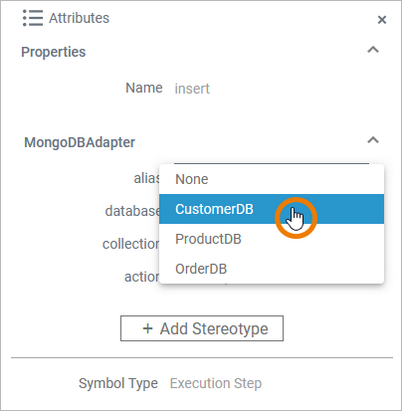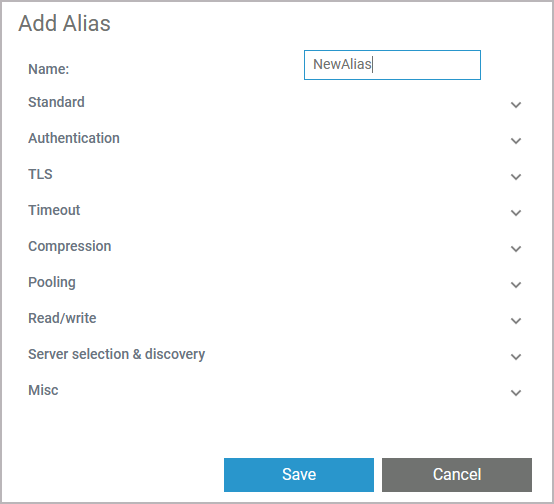MongoDB Adapter
The Designer supports MongoDB - a NoSQL and document oriented database. MongoDB support is native and you do not need to install any client tools or drivers. Also, your PAS system comes with a MongoDB scheer-mongo pre-installed.
Using the MongoDB adapter, you can
Task | Adapter Action | Description | Documentation Reference |
|---|---|---|---|
Insert and update documents | insert | Insert new documents to a database. | |
replace | Replace one or more documents by a new one. The documents are identified by a query. | ||
update | Update all or dedicated properties of one or more documents with new values. The documents are identified by a query. | ||
Retrieve documents/information | find | Get a result set based on a provided query. You can get the result set all at once, or fetch single documents via a handle (see fetch). | |
fetch | Fetch single records from a result set that has been retrieved by find. | ||
aggregate | Aggregate data based on a query and MongoDB pipelines. | ||
Remove documents | delete | Remove one or documents from the database. The documents are identified by a query. |
To use the MongoDB adapter it is helpful if you are familiar with the concepts of MongoDB.
As opposed to standard JSON, with MongoDB the order of keys does matter. Action script statement classToJSON() Operation, however, does not guarantee to preserve the order presented in the class. In many cases that will work but it may behave unexpectedly wrong.
So, with the MongoDB adapter always use classToExtendedJSON() Operation.
Adding a MongoDB Adapter Operation to a Diagram
Expand the path to the MongoDB adapter in the service panel (Base Types/Bridge Base/Base Components/Add Ons/MongoDB):

You can drag out operations from the data model to any diagram:
The example shows how to add a MongoDB adapter operation to a BPMN execution diagram:

Configuring the MongoDB Adapter Operation
Once an operation has been added to a diagram, it needs to be configured as a MongoDB adapter. Select the newly added MongoDB adapter operation and switch to the Attributes panel. Depending on the diagram type you can see the following information (example BPMN execution diagram):

Attribute | Description | Allowed Values / Example |
|---|---|---|
Name | The name of the MongoDB adapter operation. | insert |
Symbol Type | Operations added to a execution diagram are execution steps. | Execution Step |
All this is predefined and cannot be changed. Click Add Stereotype to define the selected operation as to be a MongoDB adapter:

Select MongoDB Adapter from the list of available adapter stereotypes. Click Save:

The Attributes panel shows the added adapter stereotype. Now you still need to configure the adapter. Expand the stereotype by clicking the arrow on the right:

A MongoDB adapter is configured via its alias (see Aliases for more information on aliases):

Additionally, you can insert
database
collection
See further information below and on page MongoDB Adapter Reference. The adapter option action derives from the used operation. Do not configure this.
You can select an existing alias from a drop-down list by clicking the text Select alias:

If you want to remove an added alias, select None from the drop-down list:

You can also create and add a new alias by clicking option Plus:

Refer to Aliases for more information on how to create a new alias.
A dialog opens where you can name and configure the new alias. Click Save to create and add the new alias:

Refer to MongoDB Adapter Reference for more information on the configuration options of this adapter.
To add a database, click Plus and enter the name of the default database to be used:
.png?inst-v=ee793349-a7d5-4b2f-8bd9-38edc2bde5e0)
To remove a database, click the corresponding Minus.
To add a collection, click Plus and enter the name of the default collection to be used:

To remove a collection, click the corresponding Minus.
MongoDBAdapter_CustomerData_Example
Click here to download a simple example model that shows the usage of the MongoDB adapter in Scheer PAS Designer.
Related Documentation:
